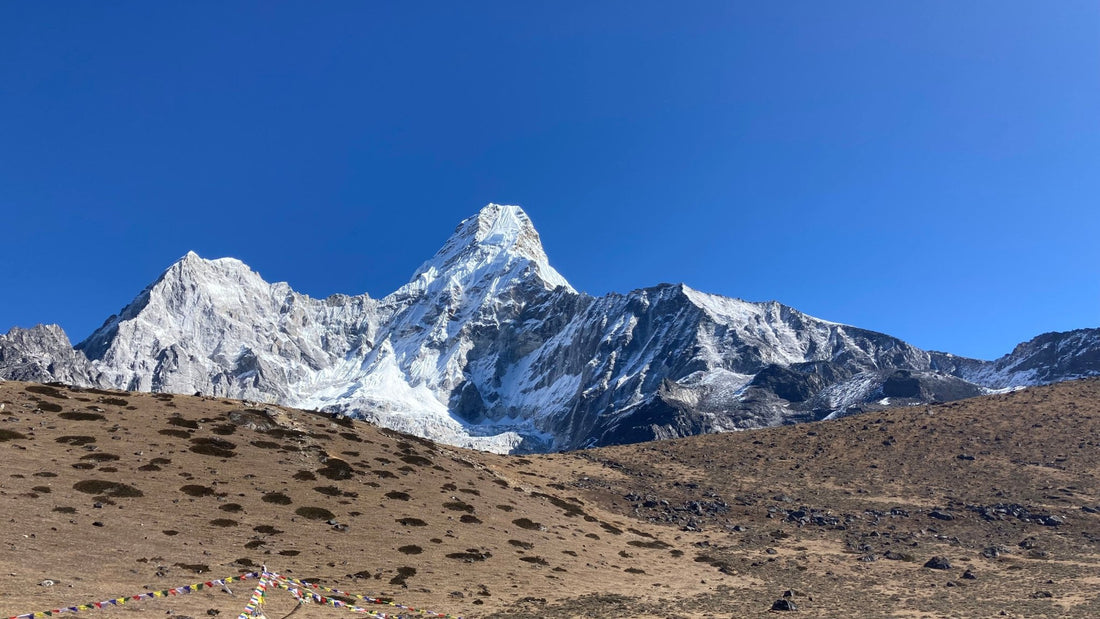
Where to climb in October
Share
October marks quite a shift in the seasons for mountaineering around the world. For much of Europe and North America, it can be a frustrating month, often too wet to climb rock but not cold enough for winter conditions to come in. Further afield though, autumn marks the start of the post-monsoon season in Asia, and there are plenty of challenges to be found still in South America's spring.
These are some mountaineering destination suggestions, but as always, you’ll need to check up to date information regarding access and logistics, particularly for those areas subject to geo-political tensions. Here’s a little inspiration for the month of October. And if not this year, why not next?
Europe & the Middle East
October is low season in the Alps, with the lifts and high alpine huts largely closed. It’s still possible to climb of course, if the weather is favourable, and you are prepared to put the miles in on the approaches. Be prepared for the shorter daylight hours, higher chance of snow, and lower temperatures overall – but on the plus side you’ll enjoy relative solitude in the mountains.
This can be a good month to attempt Toubkal in Morocco or Mount Ararat in Turkey, as the temperature in the High Atlas is quite amenable during this time, but it’s quieter than in peak tourist season. Towards the end of October you might get some snow, but the mountains are largely in summer conditions still.
Asia
With the end of the monsoon season, central Asia (home to the world’s highest mountain ranges) sees a lot of mountaineering action in October, particularly in Nepal.
In the Everest region, Island Peak, Mera Peak, and Lobuche are good introductions to climbs of around 6000m altitude with lower technical difficulty and are often a stepping-stone for trekkers who aspire to become mountaineers. For those already comfortable on exposed and technical terrain, Ama Dablam (at 6812m) is an undeniably stunning peak, hard to miss on the approach up the Khumbu valley. It has a bit of everything from snow, ice, mixed and pure rock climbing, as well as some extremely exposed high camps.

Camp 2 at 6000m on Ama Dablam with the route to the summit beyond.
In the same region, you also have Baruntse and Himlung Himal which both make for an excellent progression to peaks over 7000m. Most of these mountains can be climbed in the Spring too, but the post-monsoon season often has more stable (if colder) weather which makes October a great month for these peaks.
There are of course other mountainous regions in Nepal, including the Annapurna range in the west of the country which is famous for its spectacular trekking. Annapurna I (8091m) is a serious undertaking and usually climbed in the spring, but some of the lower summits and surrounding peaks (e.g. Annapurna IV or Tharpu Chuli) can be climbed in the autumn which coincides with the height of the trekking season as the weather is most favourable.
Australasia
Carstenz Pyramid is arguably the most technical of the Seven Summits, and because of its location near the Equator the weather is tropical and wet, so there is no real ‘good season’ to climb it, but October is usually one of the drier months.
Africa
October is undeniably one of the prime months to climb Kilimanjaro, but if you want to avoid the crowds perhaps consider one of the more unusual routes to the summit. There’s also Mount Meru nearby which gets a fraction of the number of people compared to Kili.
For more adventurous alpine rock routes, you could do worse than Mount Kenya’s north face which is still in season in October. There are two distinct summits, Batian and Neilion which are just over 5000m high, and are separated by a col known as the ‘Gates of Mist’, which gives you some idea of the conditions you might expect!
North America
Much like the Alps, October in the Rockies, Cascades, and Coast Mountains can still provide decent alpine mountaineering (albeit with shorter daylight hours) if a high-pressure weather system holds. Colder temperatures mean some ice can form (good if it’s helpful on the route, bad if it’s not!), glaciers are firm underfoot and rockfall is limited to sunny afternoons. Again though it pays to be prepared for cooler temperatures and shorter days, so moving fast is key.
If the weather doesn’t play ball then all is not lost if you can head further south. Often overlooked, Mexico has a range of impressive volcanic summits including Pico de Orizaba which is the highest volcano in North America at 5636m.
South America
October being springtime in the Southern hemisphere is the tail end of the best season for the volcanoes of the Cordillera Occidental chain that spans Peru, Bolivia, and Chile. The Puna de Atacama area actually has the highest concentration of peaks over 6000m in the whole of the Andes, but its remoteness has left it relatively under explored. The peaks are largely volcanic, so aren’t technically very difficult – there are even Inca ruins on the summits of some, including Nevado de Chañi (5930m) in Argentina.
So there you have it, there’s plenty of mountain adventures to be had around the world in October.
